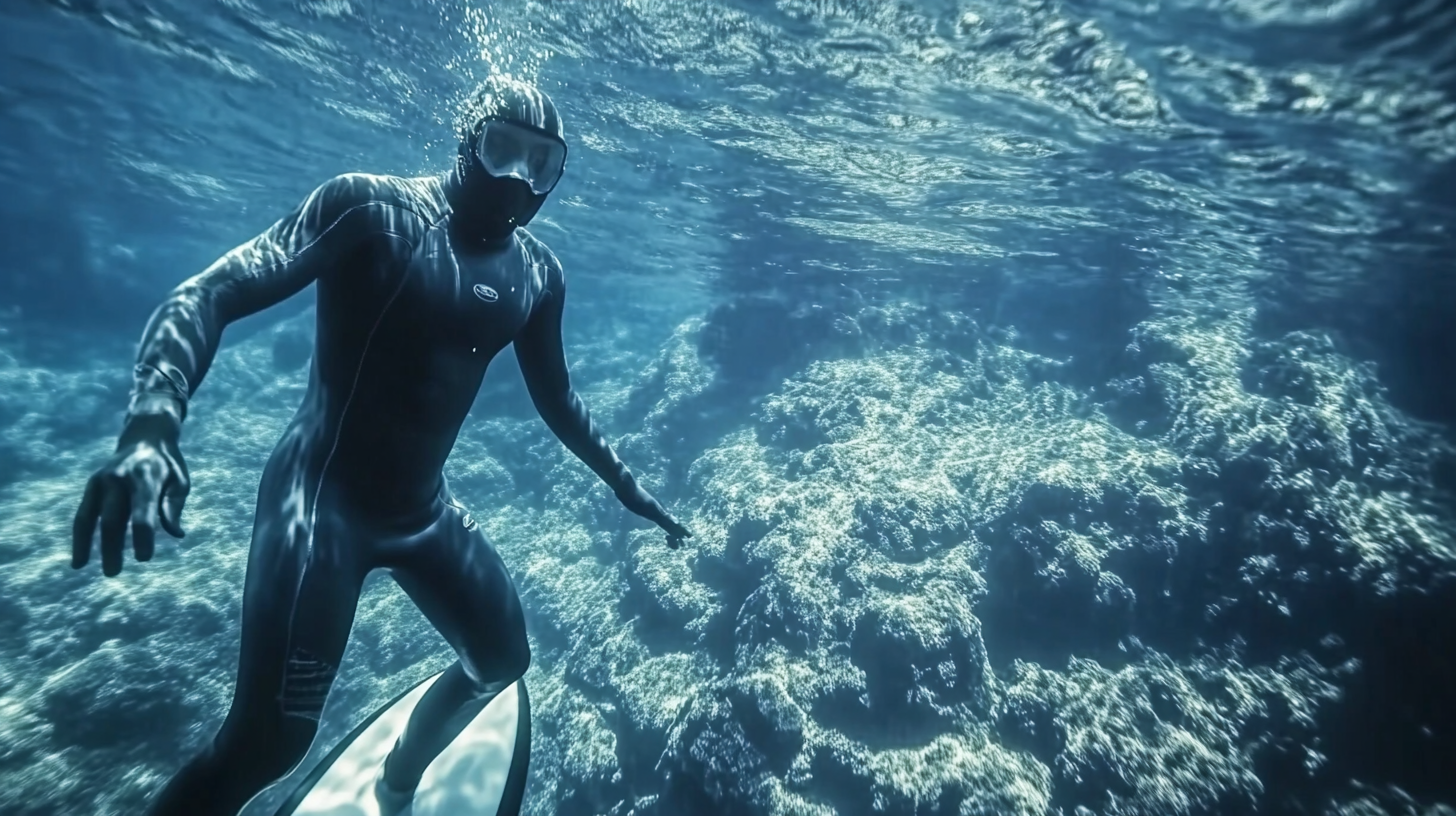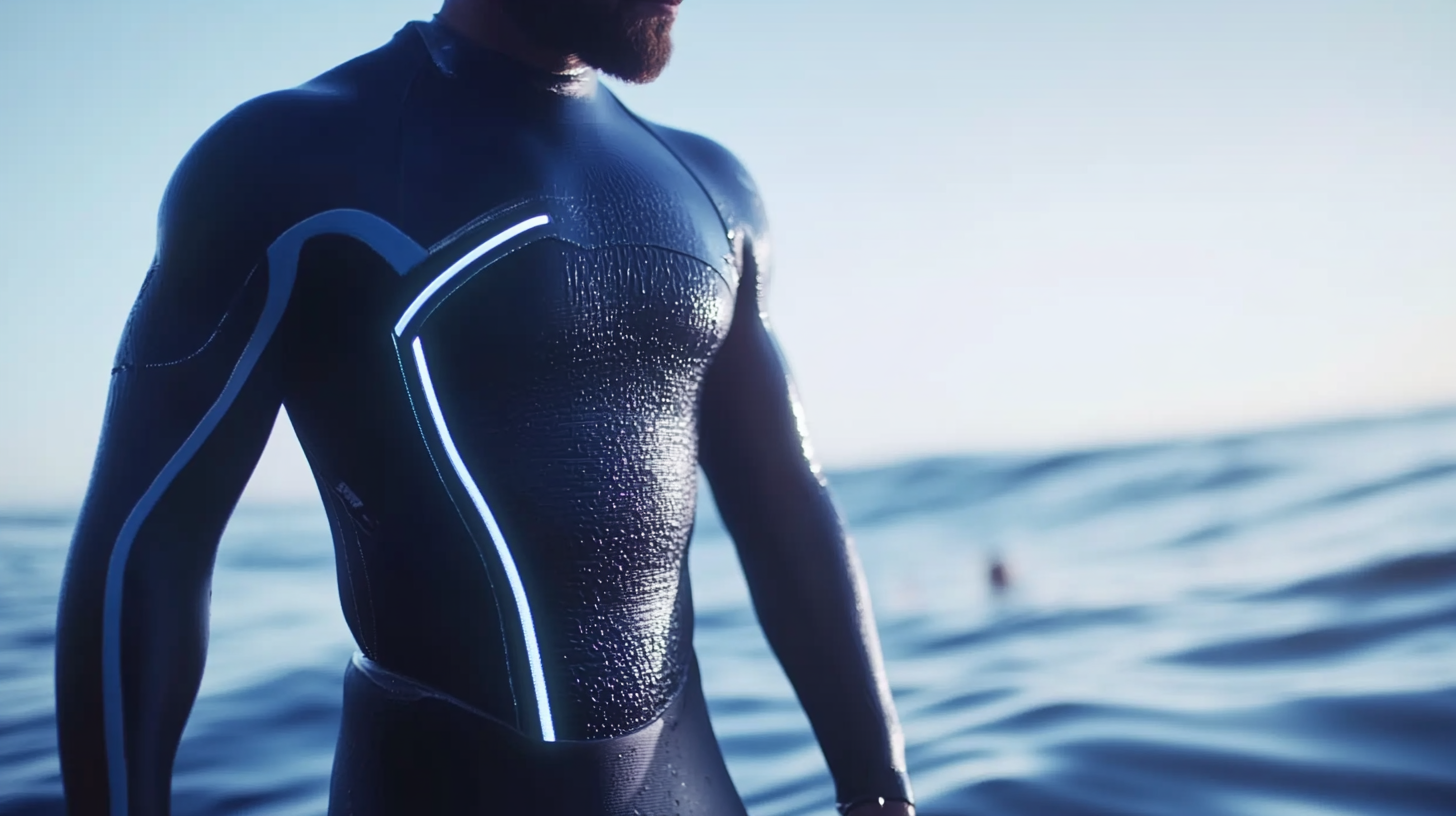As the global surfing community continues to embrace sustainability, innovative advancements in surfing suits material are proving pivotal in reducing the ecological footprint of water sports. The International Surfing Association reported that over 35 million people globally engage in surfing, highlighting the need for environmentally-conscious practices within the industry. Recent studies indicate that traditional neoprene materials contribute significantly to ocean pollution, prompting manufacturers to explore alternatives such as plant-based neoprene and recycled plastics. This shift not only aligns with consumer demand for sustainable products but also reflects a broader trend, where the eco-friendly apparel market is projected to reach $8.25 billion by 2025. As surfers increasingly seek gear that balances high performance with minimal environmental impact, the evolution of surfing suits material will undoubtedly shape the future of water sports for generations to come.

As the demand for eco-friendly products grows, the surfing industry is experiencing a wave of innovation in materials used for wetsuits. Emerging eco-friendly materials, such as limestone neoprene and recycled plastics, are driving this shift towards sustainability in surfing gear. According to a report by Grand View Research, the global wetsuit market is projected to reach $3.8 billion by 2025, with consumers increasingly prioritizing eco-conscious products. Companies are now focusing on sourcing sustainable materials that reduce their environmental impact while maintaining performance and durability.

One notable advancement is the development of biodegradable wetsuit fabrics, which can break down over time, minimizing waste in landfills. A study by the Textile Sustainability Coalition found that traditional neoprene can take over 50 years to decompose, highlighting the urgent need for alternatives. Additionally, brands are incorporating recycled materials, such as ocean plastic and discarded fishing nets, into their designs, reflecting a commitment to not only the surfer's experience but also the health of our oceans. As technological innovations continue, the future of surfing suits promises to align performance with ecological responsibility, ensuring that water sports enthusiasts can enjoy their passion while protecting the environment.
As the world increasingly prioritizes sustainability, the surfing industry is witnessing groundbreaking technological innovations in fabric advancements that are setting new benchmarks for water sports gear. One of the most exciting developments is the rise of recycled materials. Brands are now crafting wetsuits and surf apparel from recycled plastics and fishing nets, significantly reducing ocean waste while providing durable, high-performance products that surfers can rely on.
In addition to recycled fabrics, advances in bio-based materials are paving the way for environmentally friendly alternatives to traditional neoprene. Innovations such as plant-based rubbers offer comparable flexibility and thermal insulation without the environmental toll of synthetic options. These materials not only lessen the reliance on fossil fuels but also enhance the overall comfort and performance of surfing suits, allowing athletes to push their limits while being mindful of their ecological footprint. The fusion of technology and sustainability in water sports is not just a trend; it promises a future where adventure and environmental responsibility go hand in hand.
This chart illustrates the sustainability scores of various innovative materials used in surfing suits. Materials like Econyl and Natural Rubber lead the way in terms of environmental impact, showcasing the industry's shift towards greener alternatives.
As we look towards 2025, the surfing gear market is witnessing a significant shift in consumer preferences, primarily driven by a growing emphasis on sustainability.
Recent reports indicate that over 70% of surfers are now prioritizing eco-friendly materials when purchasing wetsuits, a sharp increase from just 15% five years ago. This trend reflects a broader movement across the water sports industry where brands are increasingly adopting sustainable practices.
According to the Global Surfing Industry Report, sales of sustainable surfing suits are projected to grow by 30% annually, indicating a robust market demand.
Innovations in materials are at the forefront of this sustainability revolution. Companies are investing in alternative fabrics such as natural rubber and recycled plastics, which not only reduce environmental impact but also enhance product performance. For example, the use of water-based adhesives and upcycled components has become a standard, with brands reporting a 25% decrease in carbon emissions per suit produced.
As environmental consciousness rises among consumers, the surf industry is adapting, ensuring that performance and sustainability go hand in hand.
This shift towards eco-conscious gear not only reflects the values of today’s surfers but also sets a precedent for future innovations in water sports.
Sustainable materials are rapidly transforming the landscape of the water sports industry, driven by an increasing demand for eco-friendly innovation. According to a recent market study by Custom Market Insights, the global smart water management market is projected to reach USD 21.4 billion by 2033, growing at an impressive CAGR of 11.2%. This growth highlights a larger trend toward sustainability in various industries, including the competitive surfwear sector, where brands are exploring alternative materials that reduce environmental impact while enhancing performance.

The shift towards sustainable materials not only caters to the environmentally conscious consumer but also positions companies strategically in a market that is becoming increasingly focused on sustainability. For instance, advancements in biodegradable fabrics and recycled components are becoming key differentiators that appeal to a growing demographic of eco-aware athletes. As seen in other sectors, such as the reusable water bottle market, which is expected to increase from USD 9.72 billion in 2024 to USD 15.27 billion by 2034, there is a clear demand for products that align with ecological values. This trend signifies a significant opportunity for growth, fostering innovation and propelling the water sports industry into a more sustainable future.
Regulatory changes are playing a pivotal role in shaping the future of surfing suit manufacturing as environmental policies increasingly prioritize sustainability. According to a report by the International Surfing Association, nearly 70% of surfers are concerned about the environmental impact of surfing equipment, driving manufacturers to innovate more eco-friendly materials. As a response to both consumer demand and regulatory pressure, brands are increasingly adopting materials such as Yulex, a plant-based alternative to traditional neoprene, which not only reduces carbon emissions but also supports the conservation of rainforests.
In 2022, the European Union introduced stricter regulations on plastic production and waste management, which significantly affect the sports apparel industry. The Sustainable Apparel Coalition reported that companies that proactively adapt to these regulations could enhance their market competitiveness by up to 30%. Surfing suit manufacturers are therefore exploring innovations such as recycled plastics and biodegradable components, making strides toward eco-conscious production practices. As these regulatory frameworks evolve, they are expected to reshape the supply chain dynamics and encourage broader adoption of sustainable materials across the water sports industry.
| Material Innovation | Sustainability Rating | Regulatory Impact | Market Adoption Rate |
|---|---|---|---|
| Recycled Nylon | High | Strict sourcing policies | 65% |
| Natural Rubber | Medium | Support for eco-friendly materials | 50% |
| Bio-based Neoprene | High | Incentives for green production | 40% |
| Ocean Plastic | Very High | Regulations promoting recycling | 30% |
| Hemp Fiber | High | Encouragement of organic cultivation | 20% |
